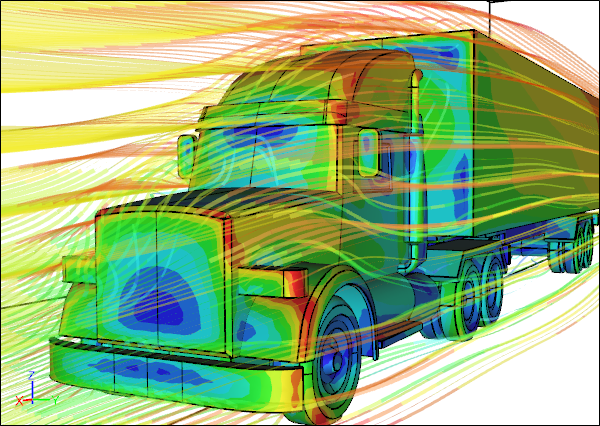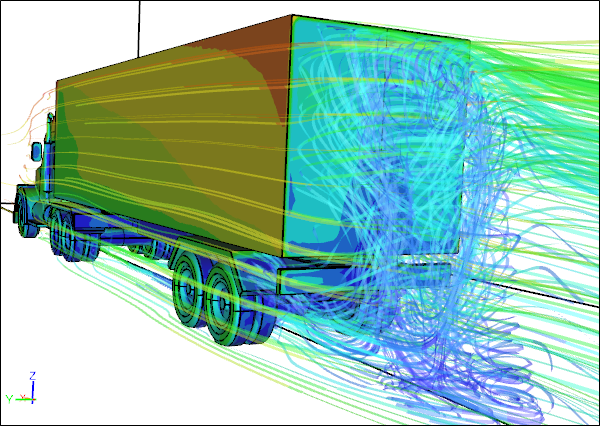
Challenging Orthodox Truck Design
While marginal gains are all the rage in cycling, US trucks by comparison are a target rich environment when it comes to external aerodynamics. Specifically the name of the game in haulage is to minimize fuel costs and that translates directly to minimizing drag.
 CFD Simulation of the Airflow Around a Traditional US TruckGeometry courtesy of Nectar Design
CFD Simulation of the Airflow Around a Traditional US TruckGeometry courtesy of Nectar Design
The basic box-like utilitarian configuration has been a mainstay in US truck design for decades. Motivated by recent volatile fuel prices, various aerodynamic aids have started appearing on US trucks, but I wonder if it's time for a radical rethink of the basic truck design?
For inspiration we can look across to Europe where decades of high fuel prices have forced haulage companies to seek low drag options with integrated cab and trailer designs. For even more inspiration we don't have to look too far into the future to see autonomous vehicles. Imagine the design freedom removing the cockpit would afford.
 Massive Recirculation Zone at the Rear of a Traditional US TruckGeometry courtesy of Nectar Design
Massive Recirculation Zone at the Rear of a Traditional US TruckGeometry courtesy of Nectar Design
The ready availability of Computer Aided Engineering (CAE) simulation tools, such as Computational Fluid Dynamics (CFD), means that there has never been a better time for innovators to think large and experiment with radical designs. Using virtual tools to challenge the orthodox is a low risk option compared to times past when only a small fraction of radical design departures made it in to wind tunnels for testing.
What design orthodoxy are you going to challenge using your simulation tools?
Notes
- The truck geometry was provided courtesy of Nectar Design.
- The CFD simulation of the truck was configured in Caedium using the incompressible, steady-state RANS solver, with rotating wheels and the k-omega SST turbulence model.
Recent blog posts
- CFD Simulates Distant Past
- Background on the Caedium v6.0 Release
- Long-Necked Dinosaurs Succumb To CFD
- CFD Provides Insight Into Mystery Fossils
- Wind Turbine Design According to Insects
- Runners Discover Drafting
- Wind Tunnel and CFD Reveal Best Cycling Tuck
- Active Aerodynamics on the Lamborghini Huracán Performante
- Fluidic Logic
- Stonehenge Vortex Revealed as April Fools' Day Distortion Field
